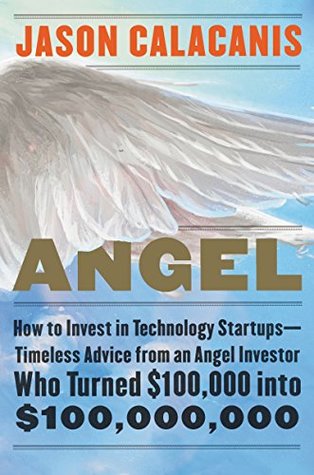More on this book
Community
Kindle Notes & Highlights
Read between
December 25, 2017 - January 28, 2018
chances of success you think each one will have (low, medium, and high), and write some notes in a column with a date. Pick the top five or ten and invite them to come for a formal meeting. Now write down what your impressions were after the meeting, as well as the amount they’re raising and the valuation.
The truth about 95 percent of incubators is that they are for the founders of startups that couldn’t raise money on their own.
You should double-check that you have pro rata
to get their monthly updates so that you can help.
Put a quick check-in/coffee meeting with the founders a hundred days from now on your calendar, as well as a one-year follow-up call.
You should try to get a copy of the cap table if they’re willing to give it, as this gives you a very clear picture of who was involved in the round and how many shares each person owns.
you are never speaking for the company itself.
your ability to build a product or service that a large group of people find delightful—and indispensable.
A side letter is an agreement between the company and the investor in addition to the standard deal terms.
the option of a board seat
Pro rata rights
Information rights
First, as an angel, you need to document and fight for your rights.
be on high alert when a new investor or an acquirer wants you to screw your earlier investors.
Building startups is brutally hard and infighting between investors is an unacceptable waste of precious time and attention that we should be giving to our founders.
“I would like a monthly update from you that includes the key metrics for the business, as well as what you consider the wins and losses since the last email. I would like you to put requests for me and your other investors in the email as well. Every email should have how much cash you have left, your burn rate, and when you will be out of cash so that we can all plan for future raises.”
when startups raise money, they are targeting twelve to eighteen months of runway, which is the amount of money they raised divided by the amount they burn in the average month.
A bridge round is not a death sentence. Many companies will do one and go on to great success, but it’s not a great sign, either, because you’re not getting new money to validate the company’s merits.
what the bridge will accomplish, typically by having them present some goals and what the startup will look like when this new tranche of capital comes in.
“feature death march,”
on a “savior search,”
a “partner parade,”
First, is it true that this one event will change their trajectory? Second, is it possible to reach that event given these additional resources?
a simple tool for figuring out how delightful a startup’s product is. It’s called NPS and it stands for Net Promoter Score. You’ve probably taken an NPS survey before. An NPS
measures the willingness of customers to recommend a company’s products or services to others. Smart founders use the feedback from NPS surveys to improve their services and maximize their growth.
a handful of people who have done angel investing for a complete decade and I am on a first-name basis with all of them: Esther Dyson, Mark Cuban, Stewart Alsop, Mitch Kapor, and Ron Conway top my list of angels who just won’t stop.
you invest in thirty startups in the manner I’ve described in this book, with the first ten being $1,000 syndicates and the next twenty being $25,000 bets, and then putting an
extra $100,000 into each of the top five startups in your portfolio.
four- to ten-times returns happen all the time in Silicon Valley


